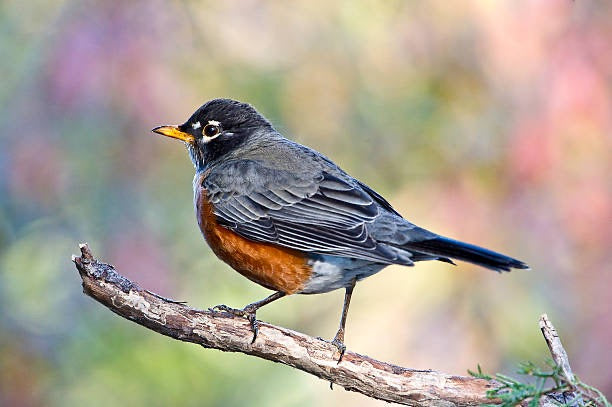
The American Robin: 7 Surprising Facts About America's Favorite Bird
Share
As American as apple pie, the sight of an American Robin hopping across a green lawn is a cherished sign of spring. Its cheerful song is the soundtrack to our mornings. But behind this familiar face is a story of incredible adaptation, intelligence, and resilience.
Let's dive into some fascinating, science-backed facts that will make you see this beloved bird in a whole new light.
1. What Do American Robins Eat? A Diet for All Seasons
Ever watched a robin perform its classic "run-stop-listen" dance on your lawn? It’s not just a cute quirk; it’s a highly skilled hunting technique. Research from the University of Massachusetts reveals that robins can feel the subtle vibrations of earthworms and insects moving underground, which is why they tilt their heads to pinpoint their prey.
Their diet is surprisingly flexible:
Spring & Summer: During breeding season, insects and worms make up about 40% of their diet, providing essential protein for their young.
Fall & Winter: When insects are scarce, their diet shifts dramatically. U.S. Geological Survey data shows that fruit can make up over 60% of their winter food source. This is why you’ll see them flocking to holly, juniper, and crabapple trees when the weather turns cold.
2. The Story Behind the Robin's Famous Song
If you think robins are the earliest singers in the morning, you're right. A 2023 study in Animal Behavior found that urban robins in Chicago can start their dawn chorus up to 90 minutes before sunrise.
They do this for a clever reason: to avoid competing with the noise of daytime city traffic. But their vocal skills go beyond that famous song. Researchers have identified at least ten distinct sounds in their vocabulary, from a sharp "yeep!" to warn of a nearby hawk to softer calls for communication.
3. Do All Robins Migrate? The Surprising Truth
It's one of the most common myths: all robins fly south for the winter. While many do migrate, data from the Bird Banding Laboratory shows a more complex story. Many robins are "nomadic," not migratory. Instead of a long trip south, they often just move from rural woodlands into warmer suburban and urban areas where food (like berries) is still plentiful.
Some northern populations may only move a few hundred miles, while others stay put year-round if conditions allow. So, if you see a robin in winter, it might be a local resident, not an early returnee!
4. Robins are Thriving in Our Suburbs
While many wildlife species struggle with human development, robins have adapted masterfully. With an estimated population of 370 million in North America, they are one of our most successful songbirds.
A study in the journal Urban Ecosystems found that suburban robins often start nesting three weeks earlier than their rural cousins. Why? The "heat island" effect of cities and the reliable food from gardens and lawns give them a head start on the breeding season.
5. They are Important Environmental Indicators
The National Audubon Society uses robin migration patterns as a barometer for climate change. Their data shows that robins are now arriving at their northern breeding grounds a full two weeks earlier than they did just 20 years ago. This makes their behavior a valuable, real-world indicator of our planet's changing climate.
6. How to Attract Robins to Your Yard
Want to see more of these fascinating birds? Robins are easy to please.
-
Offer Water: A simple bird bath on the ground is irresistible to them. They love to splash around.
-
Provide Fruiting Plants: Planting native trees and shrubs like dogwood, holly, juniper, or serviceberry will provide a natural winter food source.
-
Leave Open Lawn Space: Robins prefer foraging on open ground where they can easily spot worms and insects.
-
Offer Mealworms: For a special treat, offer live or dried mealworms on a platform feeder.
7. Observe America's Favorite Bird Up Close
The next time you see a robin, you're not just looking at a common bird; you're witnessing one of nature's greatest success stories. From their clever hunting methods to their flexible survival strategies, they are a constant source of wonder.
With the CoolFly app, you can capture every detail of their behavior, identify their unique calls, and share your amazing robin moments with a community of fellow bird lovers. Turn your backyard into a window on their world.

